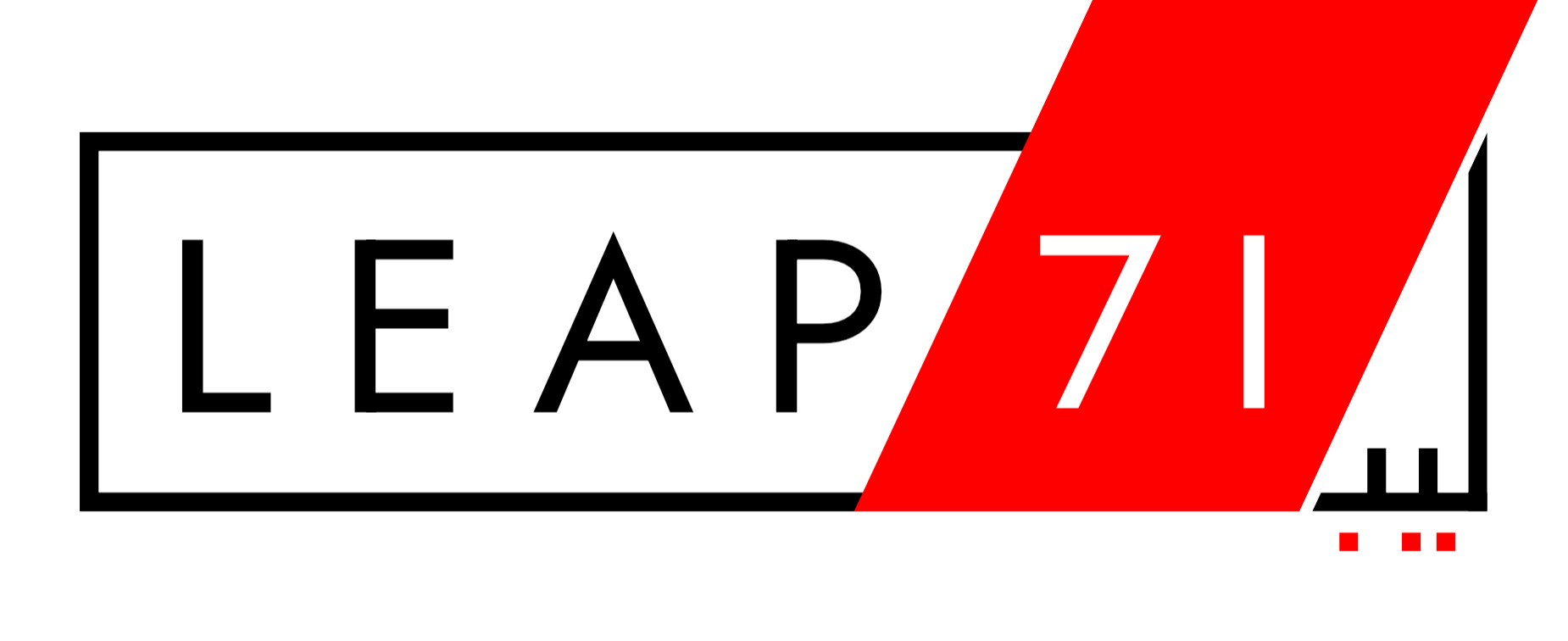Additive Manufacturing User Group Conference, Chicago, Illinois, March 11th, 2024 — For immediate release
Today, at the Additive Manufacturing User Group (AMUG) Conference 2024, LEAP 71, a Dubai-based developer of computational and AI-based engineering technology signed a three-party agreement with California-based MIMO TECHNIK and ASTRO Test Lab.
Under the agreement, LEAP 71 will collaborate closely with MIMO TECHNIK, a leading metal 3D printing provider for the US aerospace and defense industry, and ASTRO Test Lab, the first lab dedicated to the full qualification, validation, and certification of 3D printed flight critical hardware.
The three companies will create an end-to-end workflow for the design, manufacturing, and validation of computationally engineered products primarily in aerospace, but also in mobility, heating and cooling, and other relevant sectors.

Josefine Lissner, Co-founder and Managing Director of LEAP 71 said: “Aerospace is a key focus for our company. Our computational systems can create sophisticated three-dimensional geometries based on encoded engineering principles and rooted in physics. However, we also need real-world manufacturing and testing feedback to continuously improve our models. By working with MIMO and ASTRO we can move to a truly collaborative workflow with a closed feedback loop, for the production and certification of very advanced systems.”
LEAP 71 has pioneered the field of Computational Engineering, where complex physical products are created using large software models. In this new paradigm, engineers encode their knowledge into computer algorithms. The resulting Computational Engineering Model (CEM) synthesizes the geometry and provides the data files for the manufacturing process.

Jonathan Cohen, CEO of MIMO TECHNIK said: “Over the past decade, MIMO TECHNIK built up the capability to produce complex metal aerospace parts at scale. Our technology stack allows us to control the metal 3D printing process in our facility on an unprecedented level. But how can we create designs that truly take advantage of our capabilities? When we saw the work that LEAP 71 is doing in this field, it was clear, that this is the answer to significantly elevating the state of the art of engineering and manufacture things that were never created before.”

Under the agreement, the companies will also be able to take on projects that fall under the ITAR/AECA regulations of the US Government. As fully qualified providers of US aerospace technology, MIMO and ASTRO will use and modify the LEAP 71 CEMs to create parts and products that cannot be engineered outside the United States.
Humna Khan, CEO of ASTRO Test Lab added: “When I look back at my two decades of work at NASA, SpaceX, and others, I always faced the challenge to incorporate feedback from manufacturing and testing into the design side of the equation. While 3D printing allows us to manufacture a different variant of an object every time we start a print, traditional engineering using CAD simply isn’t flexible enough to adapt to constant feedback from testing. Because of all the manual work involved, objects built today are far from optimal. Using LEAP 71’s computational approach, we can re-engineer in an instant, incorporate feedback that comes directly from our testing systems, and manufacture again, creating a virtuous cycle of innovation that is unheard-of, especially in the conservative field of space technology.”

About LEAP 71
Founded by Computational Engineering pioneers Lin Kayser and Josefine Lissner in 2023, LEAP 71 aims to transform the manual process of engineering to a software-driven approach, that creates the design of complex machines using algorithms and AI.
LEAP 71 works in a broad spectrum of fields from aerospace to electric mobility. The company’s large computational models empower engineers to build highly sophisticated parts and allows them to iterate fast, accelerating the pace of progress.
The company has open-sourced its foundational technology, PicoGK, and actively promotes a transparent and scientific approach to Computational Engineering.
LEAP 71 is headquartered in Dubai, United Arab Emirates, and works with customers globally, including in the US, Europe, and Asia.
About ASTRO Test Lab
ASTRO serves as the preferred testing house for prominent aerospace primes and advanced space enterprises at the forefront of embracing advanced materials and engineering. Our collaborative efforts with industry leaders and standards bodies involve a close examination of the characteristics of cutting-edge alloys and composites. Through this partnership, we drive advancements in design and manufacturing processes, seamlessly integrating future technologies into the aerospace landscape.
Along with a service offering of advanced specimen preparation, mechanical testing and metallurgical analysis, we help with creating test matrices, developing qualification procedures and certifying hardware that has been additively manufactured with novel materials and techniques. Our commitment is to continuously elevate the standards of testing, contributing to a future where aeronautics and astronautics technologies reach new heights of performance and reliability.
For more information visit https://www.astrotestlab.com
About MIMO TECHNIK
Established in 2015, MIMO TECHNIK stands at the cutting edge of the additive manufacturing industry, offering bespoke manufacturing solutions for high-demand sectors such as Aerospace, Rocketry, Defense, and Motorsport. Our foundation is built on a profound investment in groundbreaking technology, software, and process innovation, alongside rigorous parameter development for laser powder bed platforms. At the heart of our operations is our advanced AM-Center in California, meticulously designed to meet the accelerated demands of series production.
We are equipped with 13 state-of-the-art SLM printers that have been fully customized with upgraded gas walls, filters, lasers and a proprietary recoater that we developed. Our extensive capabilities in post-processing, precision machining, and automated inspection uniquely position MIMO to deliver vertically integrated solutions. Our expert team is dedicated to supporting critical programs for aerospace OEMs, leveraging our comprehensive resources to push the boundaries of manufacturing excellence.
For more information visit https://www.mimotechnik.com




























